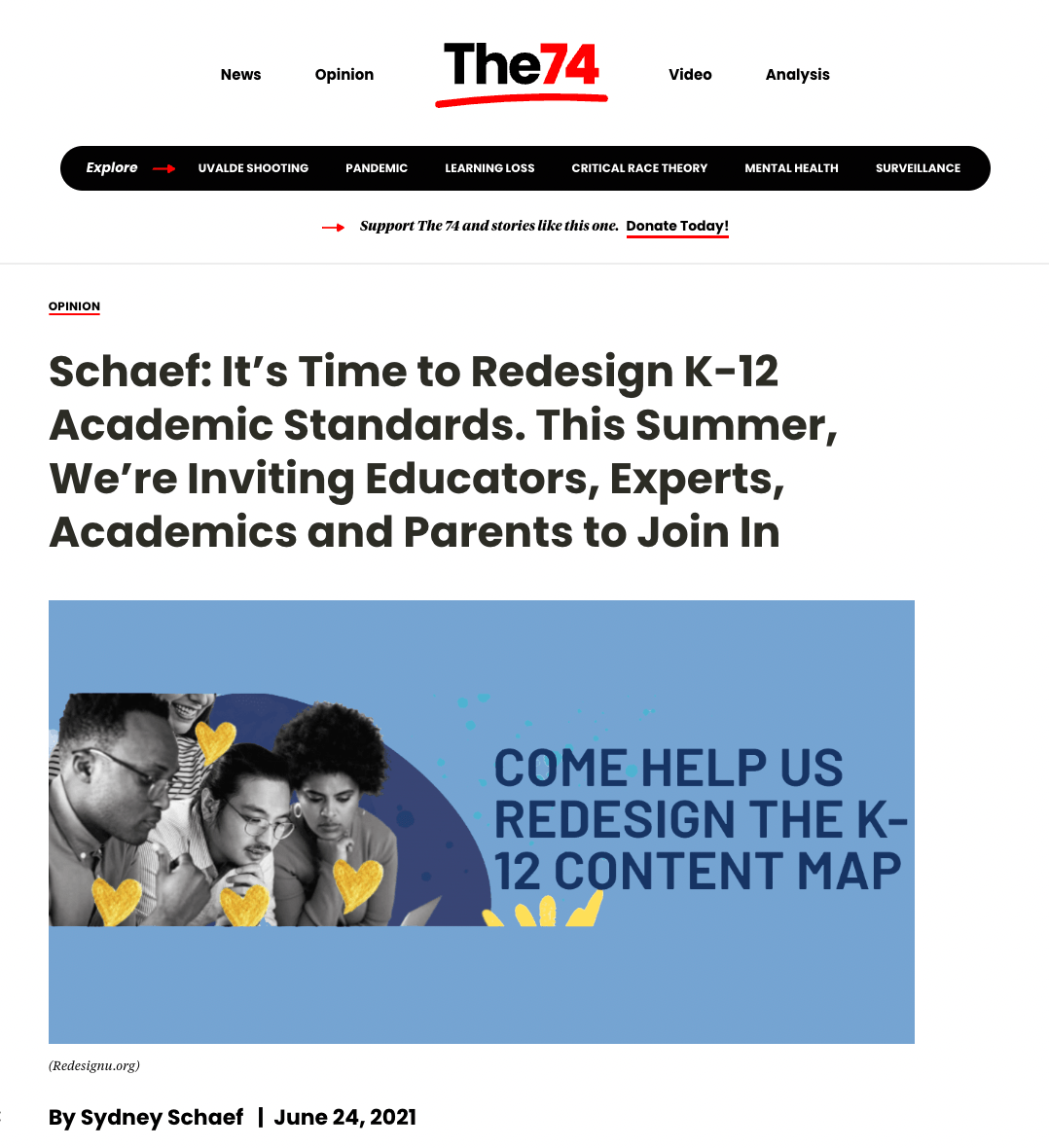TOOL #2 | reDESIGN’S RIGOR TOOLKIT
Future-ready Concept Maps
In 1892, a Committee of 10 academics and school heads determined the four core content areas that young people explore in school. One hundred and thirty years later, our education system remains organized within the same limited and outdated disciplinary silos. reDesign’s reimagined K-12 Content Maps realign the focus of learning, prioritizing important–and often ignored–concepts across many bodies of knowledge. Reflecting diverse histories and perspectives, these interdisciplinary maps lift up the topics, terms, and ideas that young people need in order to solve society’s most pressing problems and thrive in today’s world.
Why this? Current academic standards have failed to improve learner outcomes since 2004 (NAEP, 2022). Lacking grounding in research from the learning sciences and child and youth development, standards artificially separate skill and knowledge acquisition by grade level and discipline, instead of building transferable and interconnected conceptual understandings (Schaef, 2021; Rudenstine, Schaef & Bacallao, 2017; National Research Council, 2000).
Read more about rethinking K-12 concepts and topics to what’s meaningful, relevant, and engaging to learners.
It’s Time To Reimagine the K-12 Content Map,
Written by Antonia Rudenstine & published in the Getting Smart Blog
It’s Time to Redesign K-12 Academic Standards
We’re Inviting Educators, Experts, Academics and Parents to Join In
Written by Sydney Schaef & published in the 74.
Catalyzing Curriculum Redesign and Developing a Multicultural, Antiracist K-12 Content Map
Written by Sydney Schaef & published in Aurora Institute’s CompetencyWorks Blog
Redesigning Learning Outcomes
Want to learn more about this initiative?





